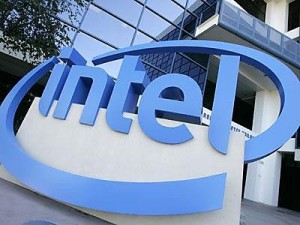 It’s clear that Frank Frankovsky, VP of hardware design and supply chain at Facebook, didn’t study marketing in school. At a press event Tuesday announcing Intel’s new low-power Atom processor, he described the chip as “wimpy” in comparison to Xeon-class chips, which he called “brawny.” But he meant it in a good way.
It’s clear that Frank Frankovsky, VP of hardware design and supply chain at Facebook, didn’t study marketing in school. At a press event Tuesday announcing Intel’s new low-power Atom processor, he described the chip as “wimpy” in comparison to Xeon-class chips, which he called “brawny.” But he meant it in a good way.
Intel released a 64-bit, 32nm dual-core Atom processor, the S1200. The 6W chip is designed for the emerging microserver market. Microservers are being designed to handle tasks that aren’t necessarily compute-intensive, like serving up billions of photos, as Facebook does.
Frankovsky, who also used the term “smartphone class” to describe microserver chips, is all about applying the right CPU to the right workload.
Facebook uses a metric called Relative Compute Units (RCU) to help determine how much performance a particular workload needs. It’s a ratio of how much useful work gets done per watt, per dollar.
For a hypothetical workload based on this equation, an Atom-based system might require two to three times the number of cores of a Xeon-based system, but the Atom cores might use one-third to a half less power, Frankovsky said.
“That’s why we’re excited about Intel and others promoting this move toward System-on-Chip (SoC),” said Frankovsky. The SoC model integrates the processor core, memory controller hub, virtualisation technologies, error correcting code and other features.
The market for microservers — or, as research firm IDC calls them, density-optimised servers — is nascent. Intel’s major competition will be from ARM-based systems, but a 64-bit ARM chip based on the ARM Cortex isn’t due until 2014.
Shane Rau, an analyst at IDC, said he expects ARM chips to gain about 2% of the x86 server processor market in 2015, or about a half-million CPUs. He expects that figure to rise to 4% the following year.
Rau said he expects the ARM competition will be welcomed for bringing in price competition and more choice.
Charles King, an analyst at Pund-IT, said Intel’s new processor was a significant step forward.
In a note sent to clients, King said the Atom 1200 “effectively puts Intel several steps ahead of where any ARM-based solution player is today.”
A major competitor is, of course, Advanced Micro Devices, which earlier this year bought SeaMicro, a maker of highly dense servers, and is building servers with the Atom processor. AMD also recently announced plans for ARM processors.
When asked what advantage an ARM chip may have over the Atom chip, Andrew Feldman, former SeaMicro CEO and now general manager of AMD’s Data Center Server Solutions group, said ARM chips will be “lower power, higher performance and lower cost.”
The new Atom chip supports up to 8GB of RAM, which Feldman questioned, asking, “Why limit the part” to 8GB of RAM? But then he answered his own question: “You limit it because you want to defend your server business — your Xeon chips.”
While the world waits for 64-bit ARM, Diane Bryant, vice president and general manager of Intel’s Data Center and Connected Systems Group, said Intel will add more cores and integrate other capabilities into the chip.
“We will not hold back performance in any one of our product lines,” said Bryant, during the press briefing. “We will put more cores down” and integrate other capabilities into the chip, she said.





